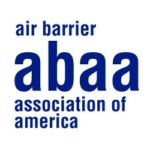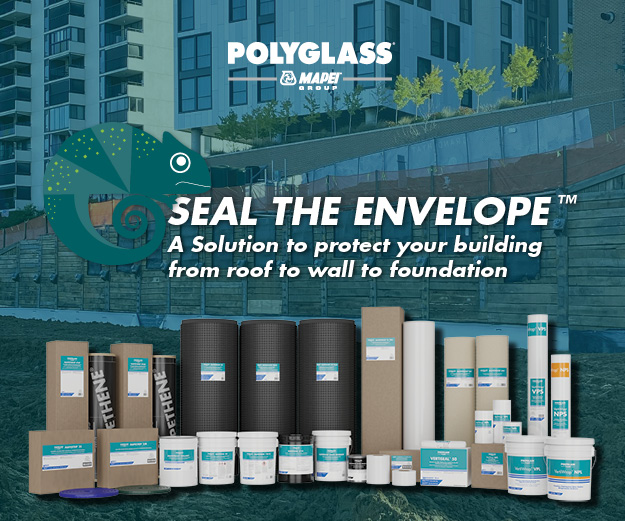ASTM Revises TPO Roofing Membrane Standard
The American Society for Testing and Materials (ASTM) has revised the standard specification for TPO roofing membranes. Titled ASTM D6878 Standard Specification for Thermoplastic Polyolefin-Based Sheet Roofing, the new requirements were approved this summer.
Revisions include raising the heat aging requirements as well as increasing the “minimum thickness over scrim.”
This new ASTM requirement for TPO heat aging is the most stringent for any single-ply roofing material. TPO will now be required to withstand 32 weeks at 240°F without significant changes to the membrane’s physical properties, a standard eight times higher than the previous one. It’s necessary due to the increase in the number of buildings utilizing highly reflective vertical surfaces (HRVS), such as mirrored widows, which concentrate the sun’s heat and ultraviolet rays on adjacent rooftops.
The new ASTM standard also increases the required minimum thickness over scrim. The new standard requires a minimum thickness of 15 mils—a 25% increase over the previous standard.
Both of these changes to the TPO standard specification help maintain TPO’s reputation as an industry leader and one of the most durable products available for low-slope roofing. Some manufacturers are already adjusting their marketing to reflect the new ASTM standard.
For example, Carlisle Syntec is now marketing their Sure-Weld TPO products as containing “eight heat and UV stabilizers that far exceed the new ASTM requirements.”
Updated VOC Regulations
Volatile organic compounds (VOCs), found in adhesives and sealants used by the roofing industry, are under scrutiny because they may contribute to the formation of ground-level ozone.
Since the state of California first implemented seasonal limits on VOC, several other areas of the country are considering similar limits. The EPDM Roofing Association (ERA) notes that states in the Northeast and Mid-Atlantic are close to standardizing emissions guidelines, but they will not be made effective in time for implementation in 2011.
ERA’s public position is in favor of “fair and reasonable efforts” to reduce VOC emissions. However, since these conditions and practices differ significantly across the country, ERA is campaigning to inform individual state regulators of these differences and to ask for modifications in the regulations.
ERA will continue to stay abreast of these new regulations for the Mid-Atlantic and Northeast as they are developed, allowing the industry to know the exact parameters of the challenges it faces, and to work from a base of knowledge rather than guesswork. For more information, visit www.epdmroofs.org.
Shingle Recycling Undeway in Texas
An asphalt shingling recycling program is now available in Texas.
Administered by CertainTeed Corporation, “Roofing Responsibly” shingle recycling is available in the state’s largest cities, including Dallas, Fort Worth, Houston, San Antonio, and Austin.
Once the contractor removes the old shingles, they will transport them to the nearest Sustainable Pavement Technologies location, which uses a separation and grinding process to make a recycled product suitable for use as road pavement.
“More than 12 million tons of asphalt shingle waste went into landfills last year,” said Paul Batt, director of product marketing for CertainTeed Roofing.. “With the Roofing Responsibly program, CertainTeed is helping homeowners keep old shingles out of landfills and put them to good use.”
To participate in the program, homeowners can visit www.certainteed.com/roofing to locate a contractor that will help them select their new shingles and facilitate the recycling process. Homeowners will receive a certificate from CertainTeed confirming the shingles have been recycled.
USGBC Welcomes New Board
The U.S. Green Building Council (USGBC), which developed and now oversees the LEED accreditation process added several new members to their board of directors. Elections were held in November, and the new members announced in early December.
Elizabeth J. Heider will continue to chair the board. Allan Skodowski of Transwestern was selected as chair-elect. Punit Jain of Cannon Design will continue to serve as secretary; Lisa Shpritz, of Bank of America was elected treasurer. Terms will begin on January 1, 2012.
USGBC’s Board includes elected and appointed directors who serve terms of three years and two years, respectively. To view the complete 2012 USGBC board roster, visit www.usgbc.org.
Hycrete now Cradle-to-Cradle Certified
Hycrete, Inc., a maker of integral waterproofing admixtures for concrete, announced in October that their liquid admixture products have been Cradle-to-Cradle certified.
The Cradle-to-Cradle program is a comprehensive environmental certification system that evaluates products and materials for their impact on human health and environmental health and design.
Hycrete’s admixtures were one of the first Cradle-to-Cradle certified building products, originally certified at the silver level. As a part of the continuous improvement process required by the certification program, Hycrete has dramatically advanced its products, manufacturing, and operations, and has now earned Gold-level certification, one of the most stringent sustainability certifications in the world.
“We are honored to have reached gold after undergoing a rigorous review process and implementing a series of targeted improvements with help from MBDC,” said Richard Guinn, Chief Executive Officer of Hycrete. “At Hycrete we believe it is important to not only build to last, but to do so in a manner that enables future generations to do the same. We are excited to see this trend continue.”
USPS’s First Green Roof Expands
The United States Postal Service installed their first vegetated green roof on the Morgan Processing and Distribution Center in mid-town Manhattan in 2009. At that time, the 55,000 sq. ft. green roof was the largest vegetated roof in New York City and one of the largest on the entire eastern seaboard.
The roof has been so successful that earlier this summer, the USPS embarked on an expansion project that tripled its size. The Morgan Building roof now boasts 150,000 sq. ft. of vegetation, as well as 55,000 sq. ft. of reflective concrete pavers and ballast.
LiveRoof Wins Jobs in Carolinas
LiveRoof, maker of a modular green roof system featuring fully grown plants, has been selected as the system of choice for five new green roof projects in North Carolina. The projects include three schools and an indoor pool, totaling more than 20,000 sq.ft., and the Greensboro public transit headquarters with 16,700 sq. ft. of green roof.
“North Carolina is one of our fast-growing markets as more organizations come to recognize the valuable benefits of vegetated roofs,” said Janie Schepker, LiveRoof area manager for North Carolina. “Effective storm water management, reduced cooling costs in summer, and longer service life for structural roof components are among the most significant benefits driving growing demand for green roofs in the region.”
ABAA Approves Weatherseal
The Air Barrier Association of America (ABAA) has approved Parex’s Weatherseal line of above-grade air barriers. The specific products that have been listed and evaluated with the ABAA. include: WeatherSeal Spray and Roll-on and WeatherSeal Trowel-on.
“Submitting the WeatherSeal products to the ABAA for evaluation demonstrates that we meet the most stringent industry requirements,” said Jamie Makuuchi, director of marketing. “The ABAA represents credibility to the industry, and we believe our affiliation with the ABAA should prove the quality of our products.”
















